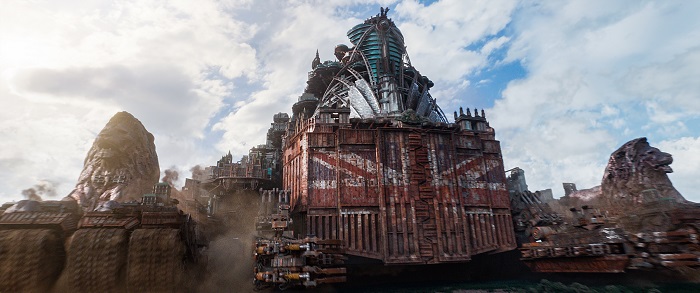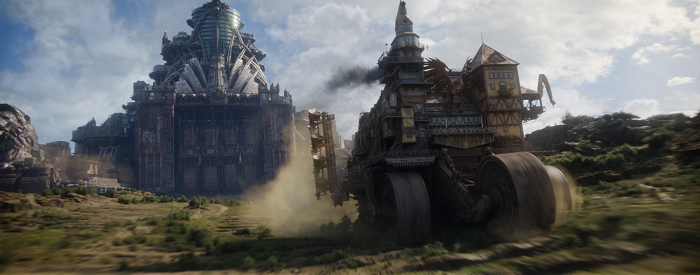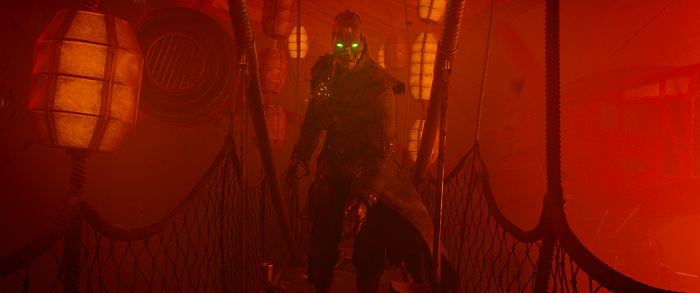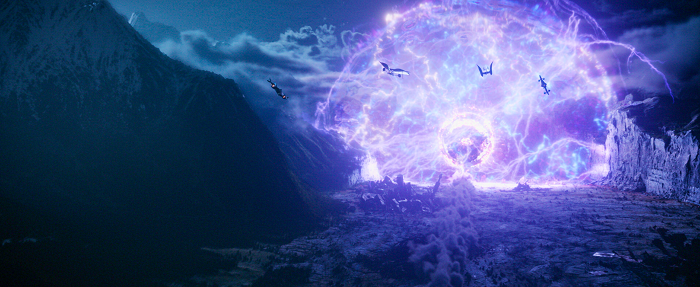
Cyberpunk genre of movies has its own perks. There’s visual effects from soup to nuts, but it’s unlike those witnessed in anything else. It has to look futuristic, advanced, alluring, quintessentially breathtaking…the travails seem agonisingly endless.
Universal Pictures’ Mortal Engines towed a similar line with its post-apocalyptic settings, brought to life with stunning visuals. Credits to New Zealand’s VFX outfit Weta Digital which helmed the project singlehandedly, delivering 1,682 shots – 378 of which were full CG shots, over a period of six grueling months.
“Weta Digital is a Peter Jackson company, and since he was the producer of Mortal Engines, it was only natural that we would be providing the visual effects,” said VFX supervisor Ken McGaugh, tracing the company’s involvement with the movie.
Based in a dystopic future of London, Mortal Engines presents an English capital mounted on wheels, where the civilisations prey on the smaller settlements. McGaugh takes us through the process of designing the city: “London’s design needed to sell both its immense size as well as maintain believability once put into motion. Both of these requirements were met by designing London’s superstructure with a vertical core, off which lily pad-like platforms were supported by large suspension systems.

“Each lily pad represented an entire neighborhood, complete with residences, parks, gardens, and shopping districts. The lily pads were distributed into layered tiers, where each tier needed to distinctly reflect the stratified social structure of London. The upper tiers were cleaner and more affluent, while the lower tiers were dirtier and poorer,”
McGaugh suggests the structure and landscape of the real London city was taken for inspiration, such as the London Bridge. He said, “We also borrowed from the real-world London, in particular, its characteristically diverse architectural styles. Structures reminiscent of London Bridge or the Houses of Parliament were juxtaposed with steel and glass buildings from the financial hub. This was carried through the design London’s front façade so that this unique characteristic of London was evident both from near and afar.
“All of this was built on top of London’s gut, where the captured city of Salzhaken was ingested. The design of the gut was inspired by large scale foundries, where industrial machinery and atmospherics were lit from warm furnace glows. At the rear of the gut were the engines and generator that powered the entire city.”
“To handle this much detail and complexity on an animated vehicle we developed a new hierarchical layout puppet system. This allowed us to use our established environmental layout and dressing tools on top of a simpler vehicle rig,” he further added.
Mortal Engines derives its dystopian world from the aftermath of ‘The 60-Minute War’ which left the earth in dire straits. However, to bring it about on screen, Weta Digital put themselves through a wringer of trial and error. “We relied almost exclusively on concept art to drive the design of the environments. It was very important that everything west of Shan Guo’s shield wall felt harsh and desolate to help punctuate the lushness of the city of Shan Guo itself to the east of the wall.

“The scale and number of environments we had to create meant we had to rely upon procedural workflows wherever possible. For example, Houdini was used to help lay out the city of Shan Guo and erosion tools were used to add detail to terrain.”
Mortal Engines’ post-apocalyptic theme was complimented by a similarly catastrophic face-off between the anti-traction airships and London in the end, and McGaugh feels that was the most challenging sequence, VFX-wise.
“It had complex choreography, heavy FX simulations, and the sheer amount of terrain over which it occurs. This was complicated by the fact that it was also that last scene to be turned over, so time was very limited.
“All the airships were buoyant and therefore needed large bags or bladders to feel believable. However, they also needed to be able to fly fast with the agility of a fighter jet. Combining these two aspects in both their designs as well as how they were animated was one of the challenges.”

Shrike, a mummy-cum-zombie stalker assassin played by Stephan Lang, was one of the highlights of the movie, as he imbued the terror and trepidation which perfectly nestled within the narrative. McGaugh then explains the creation of the CG-character: “We were provided detailed concept art for the design of Shrike but had to solve several challenges when creating him as a fully realistic creature. We developed the look of the skin/metal combination through a complex model and layered shading techniques to define which areas would be skin, metal and the transition areas between. In a standard human, you don’t see the end skeleton and the skin at the same time, so we had to work out ways to attach skin to rigid pieces and allow it to stretch and flex in a realistic manner. It was also important to add flesh to any area that required specific motion (notably the face) as the base metal pieces wouldn’t carry the performance required.”
Finally, how was the experience of working with director Christian Rivers? “Working with Christian was very collaborative, not only because he is a very talented filmmaker, but also because of his extensive experience working in VFX at Weta. We didn’t have to go through the usual confidence-building exercise we do with most directors, and because we speak the same VFX language it greatly streamlines the whole VFX process.”

